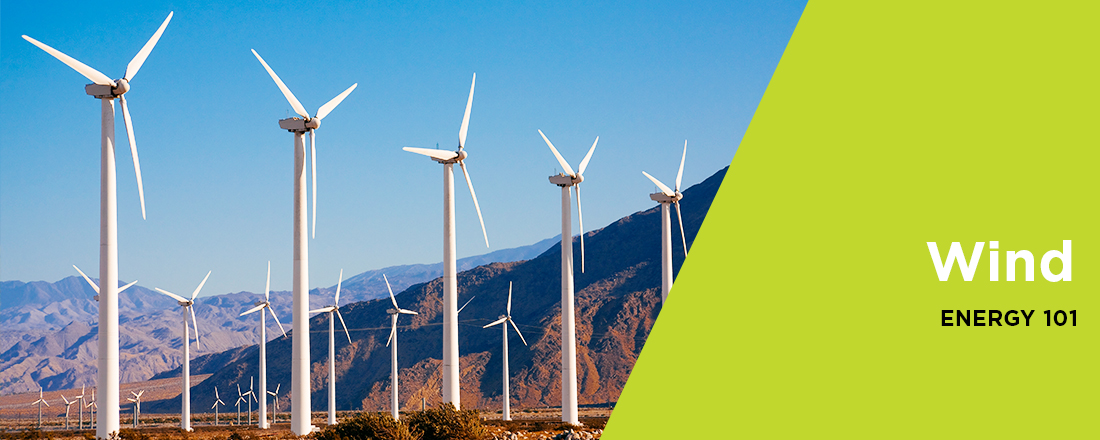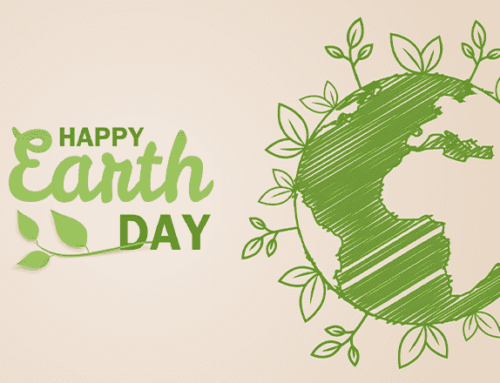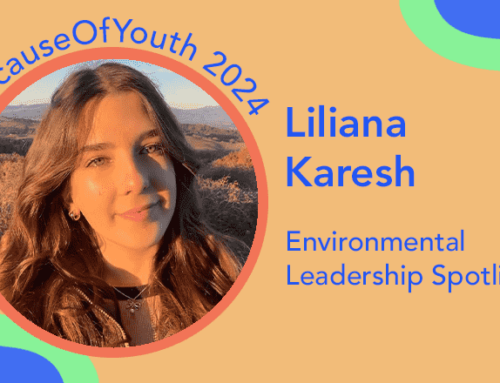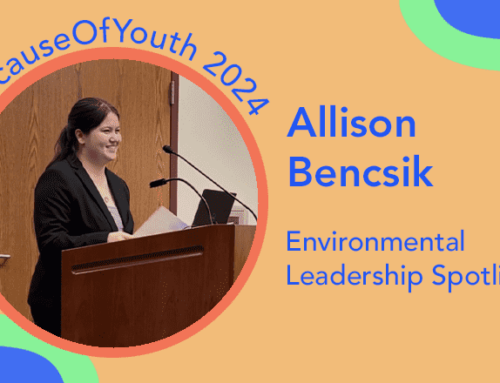MCE’s Energy 101 Series focuses on the why and how of renewable energy so that you can learn more about concepts like the benefits of biomass and the science behind solar. Looking for more? Read more Energy 101 or to dive deeper into our Energy Expert series.
If you live in California, you’ve probably driven past the wind farms along the coast and Altamont Pass. Ten percent of the electricity in the California is generated at wind farms like these. In this blog, we break down the basics of how wind energy is harnessed and turned into renewable electricity.
How do wind turbines work?
- Wind flows through the turbine and causes the blades to slowly rotate like a pinwheel.
- The rotating blades cause a series of gears inside the turbine to turn. These gears increase the rotational speed of the turbine so that the mechanical energy of the rotations can be picked up by a generator.
- When the rotations are fast enough, the generator turns the mechanical energy produced by the rotating blades into electrical energy.
- This newly generated electricity runs through a wire that’s connected to the electric grid, where it can be transported for use.
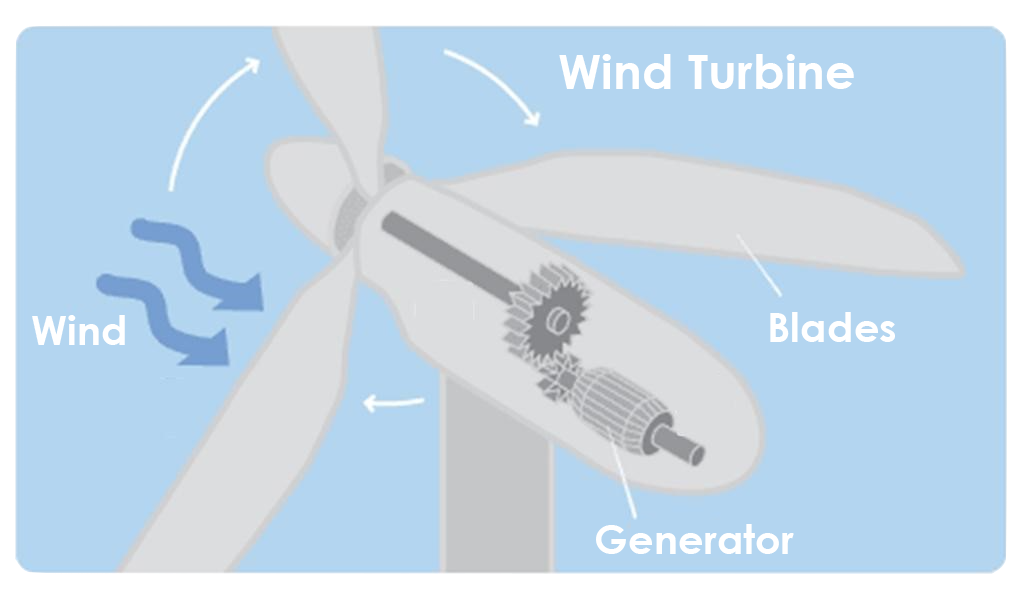
(Graphic: EPA)
What are the types of wind power projects?
Wind turbines fall into three primary categories: land wind farms, offshore wind farms, and distributed wind.
Utilities use land wind farms to supply large amounts of power to the grid. Generating capacity typically ranges from 100 kilowatts to several megawatts. The average residential customer uses about 500 kilowatt-hours a month, so projects several megawatts in size can power hundreds of homes. Land wind farms are often located in more windy areas, such as on hills or along the coast.
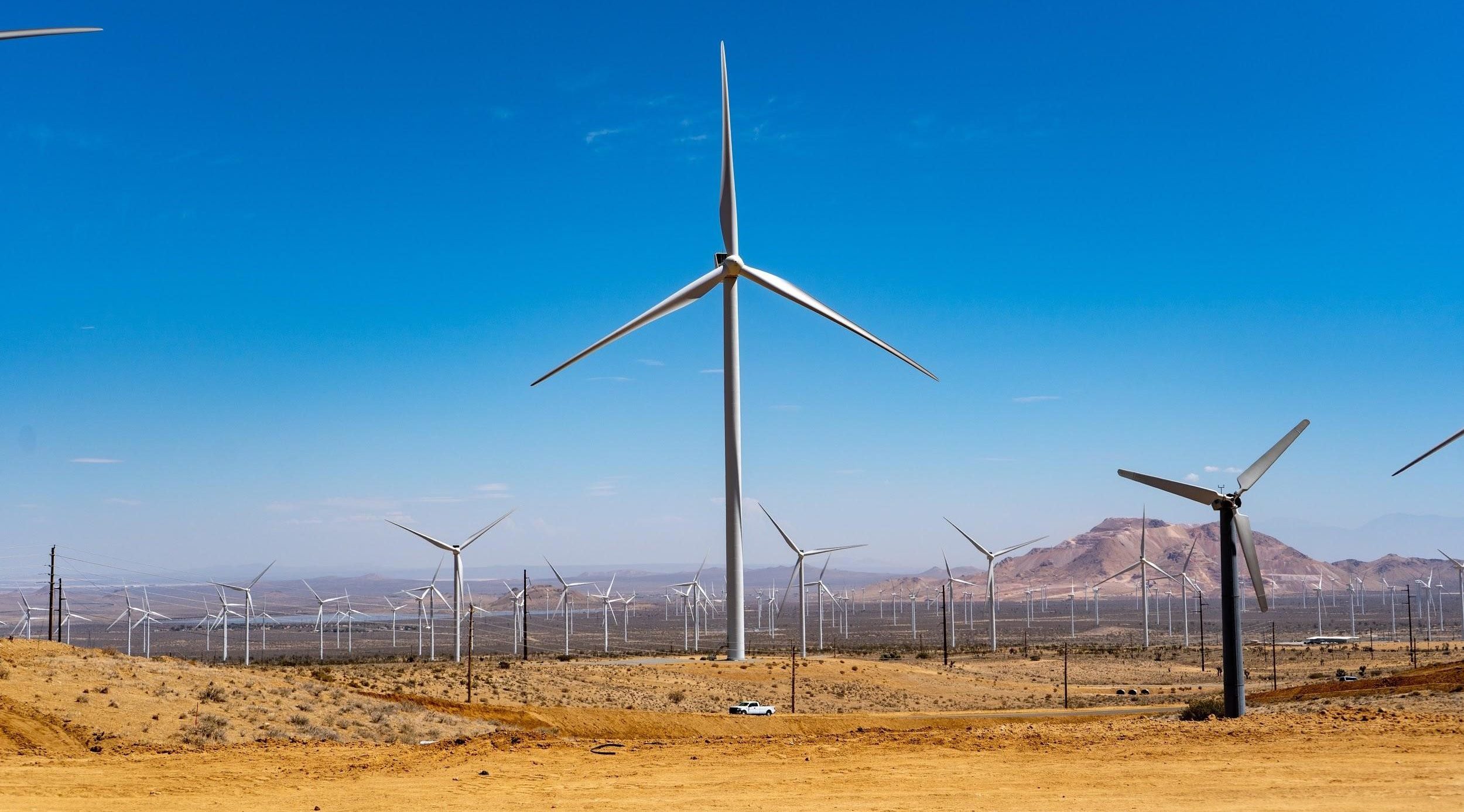
MCE’s Voyager Wind III project located in Mojave, CA
Offshore wind farms are in big bodies of water. Although they’re less common than land wind farms, they can generate more energy by taking advantage of the strong winds over the water. In the coming years, offshore wind farms will be employed more to supply power to large coastal communities.
Distributed wind power consists of smaller systems that provide energy directly to nearby areas, such as residential, commercial, or industrial properties. These wind turbines are usually smaller than those used in utility-scale wind farms.
How much electricity do wind turbines generate?
The amount of energy that a wind turbine generates depends on the size and location of the turbine. Taller turbines and larger blades capture more wind, making the turbine more efficient. A typical wind turbine generates 1 to 5 megawatts of power per year. The average wind turbine generates electricity only 40% of the time, because wind speeds must reach at least 9 miles per hour before electricity can be generated. MCE generates electricity from a variety of resources to ensure that customers have access to electricity even when the wind isn’t blowing.
Constant innovations in wind technology mean that wind power is becoming increasingly more efficient and cost-effective. The Department of Energy predicts that wind power will meet 20% of U.S. electricity demand by 2030.

